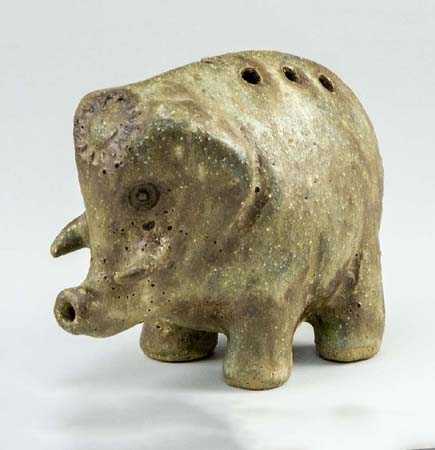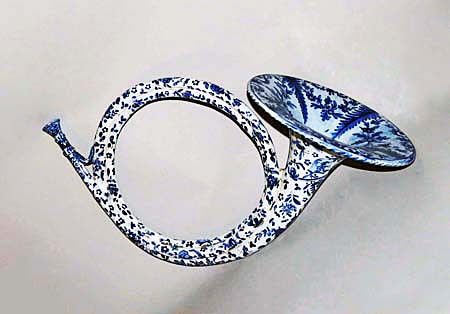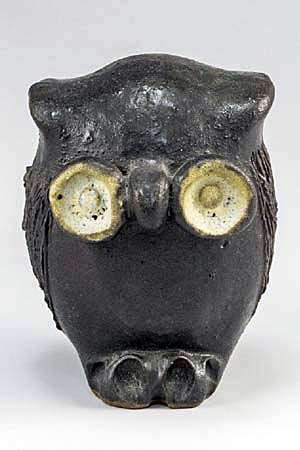Europe
Europe comprises the westernmost part of Eurasia. The name Europe comes from the Greek mythology princess called “Europa.” The beginning of western civilization evolved through the influences of a variety of cultures, among them Greece, Rome, Africa and the Middle and Far East, which created in European nations a complex and culturally diverse history. This is especially seen in music and the arts, which both reflect and influence society.
Included in this exhibit are two ocarinas from Israel, a Middle Eastern country on the Mediterranean Sea, regarded by Jews, Christians and Muslims as the biblical Holy Land. Although Israel is not geographically located in Europe, it is a member in many European transnational federations and frameworks and takes part in many European sporting events and the Eurovision Song Contest.

Frères Fourmaintraux, Violin
France
Faience pottery
1879-1887
This decorative faience (tin glazed) violin bears the mark used from 1879 to 1887. It is made from white clay painted with detailed floral patterns across the front and sides in vibrant colors. The back is plain white and signed by the artist “F. F. 378” (Freres Fourmaintraux).

David Morris, Elephant Ocarina
Israel
Clay
1900s – signed
The ocarina dates back over 12,000 years and plays a significant role in music throughout history. This clay instrument is formed in the shape of an elephant with incised eyes and fully shaped legs, tusks, and trunk. It is a greyish-brown color, with three finger holes near the top of the body and a blow hole on the trunk.

Decorative Ceramic Horn
France
Glazed porcelain
Late 1700s – early 1800s
This full-sized hunting horn in glazed porcelain is painted with cobalt blue. An overall floral decoration and an unidentified coat of arms featuring a globus cruciger (orb and cross), crown and two axes are painted on the bell. A globus cruciger has been used since the Middle Ages to represent Christ’s dominion.

Jean Mayer Owl-shaped Ocarina
Israel
Clay
1900s – signed
This clay-formed ocarina is in the shape of an owl with incised feather details on the wings, and shaped eyes, ears, beak and feet. There are three finger holes on one wing to open and close for altering the pitch, and a blow hole on the tail of the owl.

Erocle Mezzetti Ocarina
Paris, France
Terracotta
1870s-1880s – signed “Fabricant e. Mezzetti a Paris”
This early terra cotta ocarina is shaped like an airship, with a metal stop made by Italian Erocle Mezzetti. Erocle and his brother, Alberto, were apprentices to Guiseppe Donai, the inventor of the modern ocarina. The Mezzetti brothers were recognized for the musical quality of their ocarinas and earned awards at exhibitions in Paris, Edinburgh and cities around the world.
